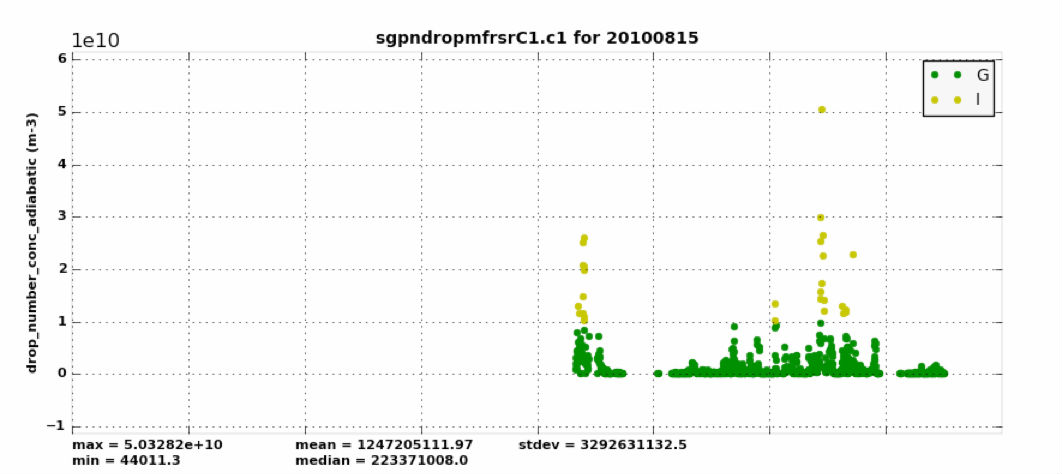
Cloud droplet number concentration is an important factor in understanding aerosol-cloud interactions. As aerosol concentration increases, it is expected that droplet number concentration will increase and droplet size will decrease for a given liquid water path. This will greatly affect cloud albedo as smaller droplets reflect more shortwave radiation; however, the magnitude and variability of these processes under different environmental conditions is still uncertain.
McComiskey et al. (2009) calculated droplet number concentration from ground-based remote-sensing measurements of optical depth and liquid water path in the first ARM Mobile Facility deployment at Point Reyes, California. As a result, the method was implemented as the Droplet Number Concentration (NDROP) value-added product (VAP).
The NDROP VAP provides an estimate of cloud droplet number concentration for overcast water clouds retrieved from cloud optical depth from the multifilter rotating shadowband radiometer (MFRSR) and liquid water path retrieved from the microwave radiometer (MWR). When cloud-layer information is available from vertically pointing lidar and radar in the Active Remote Sensing of Clouds (ARSCL) VAP, NDROP also provides estimates of the adiabatic liquid water path and an adiabatic parameter that indicates how divergent the liquid water path is from the adiabatic case.
Beginning in September 2014, NDROP now runs autonomously at the SGP Central Facility for the cloud optical depth measured by the MFRSR. Data are also available for the AMF deployment on Graciosa Island, Azores.
Browse the NDROP VAP data set in the ARM Data Archive or visit the NDROP VAP web page for more information. You will need an ARM Data Archive account to download the data. (Request an account here.)

